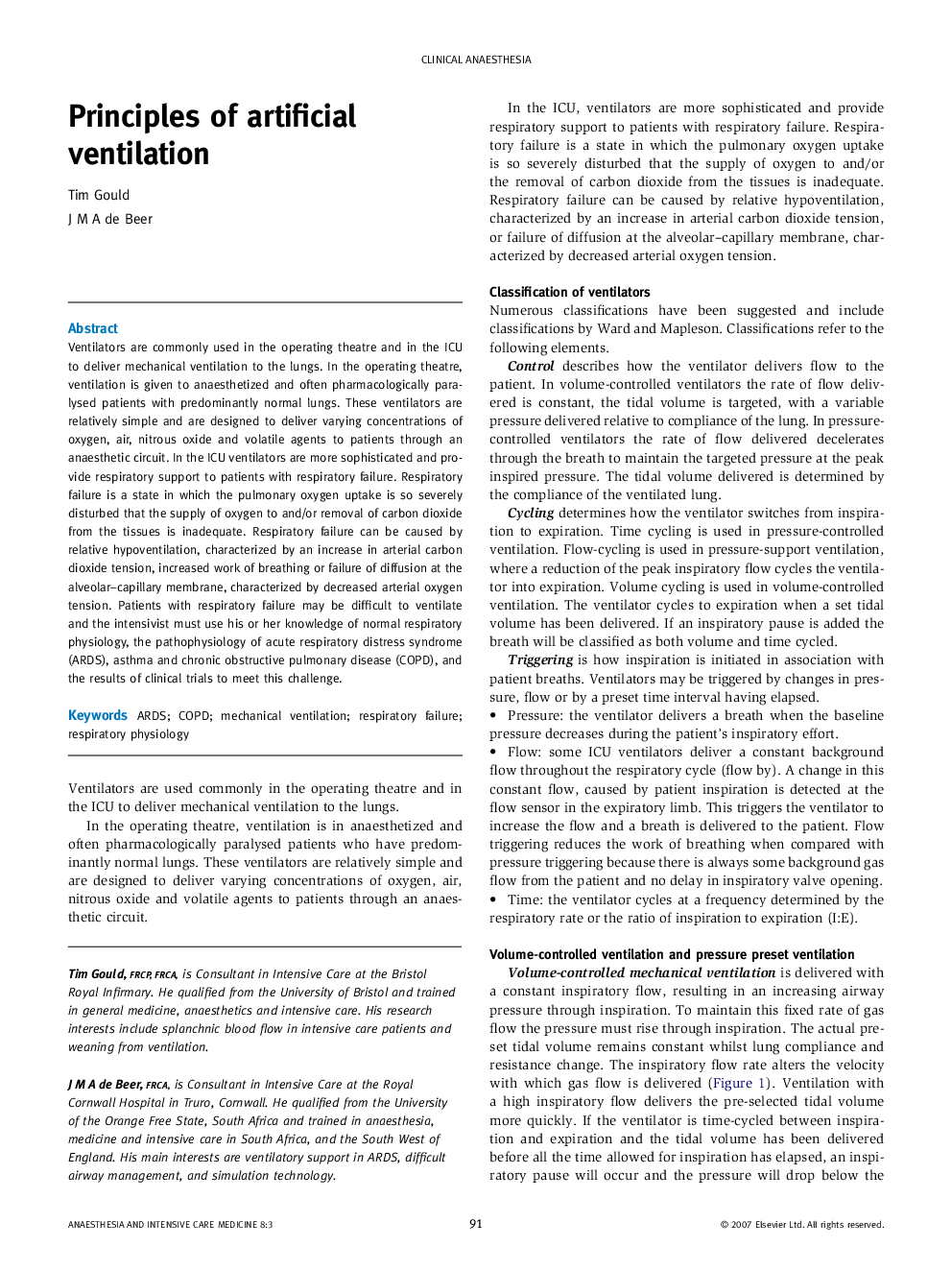| Article ID | Journal | Published Year | Pages | File Type |
|---|---|---|---|---|
| 2743733 | Anaesthesia & Intensive Care Medicine | 2007 | 11 Pages |
Ventilators are commonly used in the operating theatre and in the ICU to deliver mechanical ventilation to the lungs. In the operating theatre, ventilation is given to anaesthetized and often pharmacologically paralysed patients with predominantly normal lungs. These ventilators are relatively simple and are designed to deliver varying concentrations of oxygen, air, nitrous oxide and volatile agents to patients through an anaesthetic circuit. In the ICU ventilators are more sophisticated and provide respiratory support to patients with respiratory failure. Respiratory failure is a state in which the pulmonary oxygen uptake is so severely disturbed that the supply of oxygen to and/or removal of carbon dioxide from the tissues is inadequate. Respiratory failure can be caused by relative hypoventilation, characterized by an increase in arterial carbon dioxide tension, increased work of breathing or failure of diffusion at the alveolar–capillary membrane, characterized by decreased arterial oxygen tension. Patients with respiratory failure may be difficult to ventilate and the intensivist must use his or her knowledge of normal respiratory physiology, the pathophysiology of acute respiratory distress syndrome (ARDS), asthma and chronic obstructive pulmonary disease (COPD), and the results of clinical trials to meet this challenge.
